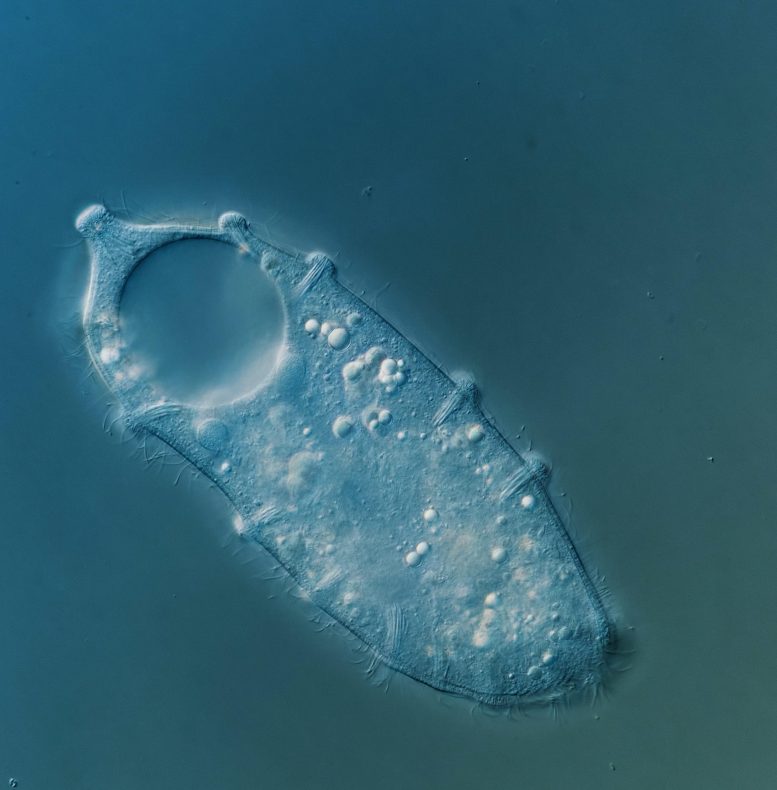
Posted on 10/26/2022 11:09:46 AM PDT by Red Badger

Scientists have discovered several elusive species of microorganisms.
Scientists have discovered new microscopic species. Researchers have found a number of very rare species of microorganisms, some of which have never been observed before and others which have eluded the attention of researchers for more than a century.
Professor Genoveva Esteban of Bournemouth University and James Weiss, an independent researcher working in his own lab in Warsaw, Poland, with his two cats, made the discovery of these elusive species and published their findings in the scientific journal Protist.
Their approach to research and the discovery of these new and rare species will aid in the public’s and scientists’ understanding of life at the microscopic level. In addition, they believe it will demonstrate the significance of microscopic life to everyone in the world and inspire thousands of young people to be interested in science.
 Legendrea loyezae with trailing tentacles. Credit: Bournemouth University
Legendrea loyezae with trailing tentacles. Credit: Bournemouth University
Microorganisms are at the bottom of the food chain and are made up of just one cell. They exist all around us and may be found in every environment, from little puddles to enormous oceans; there is still much to learn about them.
“Biodiversity at a microscopic level is not as widely understood as other areas of nature, despite the fact that whole ecosystems depend on it,” explained Professor Esteban.
“Some of these species are completely new and others have not been seen for over a century. We documented many curious behaviors on them and carried out a DNA analysis of them for the first time. This means we can understand more about their relationships with other microbes and find new branches for them on the tree of life,” Professor Esteban continued.
The very rare and new microorganisms include Legendrea loyezae.

Apertospathula, a microbe new to science. Credit: Bournemouth University
Professor Esteban said, “We don’t know what this organism is named after; the 100-plus-years-old French description doesn’t include the origin of the name but we suspect that it was after a person since “Legendre” is a common French surname.”
They have also discovered, a new Lacerus, meaning “having irregular edges” due to the serrated appearance of the cell edges, as well as a new Apertospathula, meaning “ventral mouth opening”.
The new species have not been assigned names yet, but Weiss is hoping to name them with contemporary fictional references that will attract the attention of people of all ages.
“Most organisms on the tree of life are microscopic. In fact, most life on Earth has always been microscopic. Microorganisms were the first predators on Earth, their greedy appetites were one of the leading factors of the evolution of more complex life in the early ages of Earth,” Weiss explained.

A new Lacerus with a serrated cell edge. Credit: Bournemouth University
“As prey developed better defenses, predators needed to develop better ways of catching them. After the evolution of multicellular, complex life they became the main food source for others such as krill and plankton, which in turn are food for larger species. If the organisms at the very bottom were removed, all other parts of the food chain above them would collapse too,” he added.
The duo worked together for the course of eighteen months, and investigated thousands of samples from water bodies, mainly from Poland, but also all over the world.
“We knew that no one else would be looking for these and no other research into microbes has involved such intensive searching,” said Professor Esteban.
“As with all forms of wildlife spotting, the more you look, the more you find. By taking so many samples, almost every day, we knew we could find something new. The more we know about the microscopic world, the more we can learn about the rest of their habitats where all other forms of life survive.”
After isolating the microorganisms in each sample, they were able to study their DNA and identify those that were new to science and others which were extremely rare, and they needed a specialist. Dr. Demetra Andreou, a molecular ecologist at Bournemouth University also brought her expertise to the team.
Reference:
“The Extraordinarily Rare Ciliate Legendrea loyezae Fauré-Fremiet, 1908 (Haptoria, Ciliophora)” by James Weiss, Demetra Andreou and Genoveva F. Esteban, 12 October 2022, Protist.
DOI: 10.1016/j.protis.2022.125912
never seen before, so they are new creations?
how would you tell?
New to science, not new to God....................
So there is a scientific journal named Protist.
Is there a journal called Antitist which publishes anti-scientific research?
Ripe for gain of function.
The one named Schroedinger claimed there was something in a box but he didn't know if it was dead or alive or possibly undead. You can read his version in the Tabby Journal of Medicine.


Yes more a bush.
Can you tell me the source for that?
Is it based on genomic sequences or particular gene?
Actually, I think that's just birds. But this article has the image, and I think I saw a reference to Nature in another article.
It’s hard to make out all of the names. I don’t see turkeys anywhere. Maybe they are included in Ovenbirds.
Nothing to add.
But, Why Is a Bottle Opener Called a Church Key?
Disclaimer: Opinions posted on Free Republic are those of the individual posters and do not necessarily represent the opinion of Free Republic or its management. All materials posted herein are protected by copyright law and the exemption for fair use of copyrighted works.